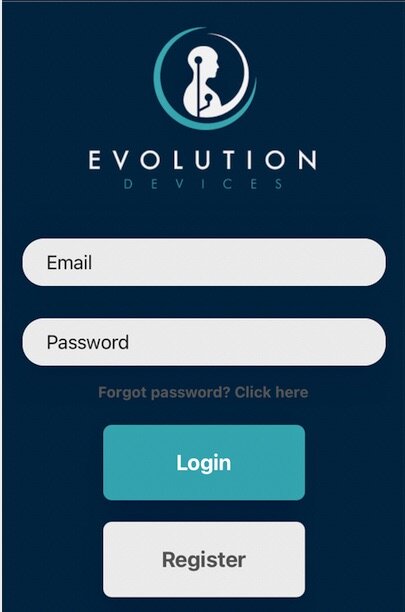Behind the Scenes with Our App Designers
Our last few articles have discussed evaluating an mHealth app from the user’s perspective. We wanted to get another take on these apps, so asked our UX/UI Intern, Megan Hetzler, and Juan Rodriguez, our Co-founder and CTO, about their thought process during the development phase and their take on the future of mHealth apps.
What are the big steps in designing a mHealth app? And what special considerations are taken into account designing an mHealth app that are different from other apps?
The biggest step for designing the EvoWalk app was determining the unique needs of our specific audience. In the UX world, “accessibility” has kind of become a buzzword. The definition of accessible design is where the needs of people with disabilities are specifically considered. For many UX designers, a lot of the interfaces you design for have such a broad audience that designing for accessibility looks a bit different than when your target audience is much more specific, like with many mHealth apps. For example, our target audience is people who have suffered from stroke or traumatic brain injuries, or are diagnosed with Multiple Sclerosis or Cerebral Palsy, etc. Many of the individuals in these populations do not have full function in one-half of their body, therefore an important thing to keep in mind was many users will only be able to use one hand when using their phone. So the majority of the buttons need to be within reach of the fingers when holding your phone with one hand. Also, some of our users may have a visual impairment so ensuring that the text is big enough and has enough contrast between it and the background was very important as well.
What does success look like in the development stage?
Success would be an app that users are able to easily interact with and understand. Good design is one that conforms to users’ normal behaviors to make the user experience seamless instead of confusing or challenging.
What are the legal requirements for mHealth apps?
The FDA and HIPPA have requirements that must be met for mHealth apps. Generally, information needs to be secured with passwords and there are restrictions about where information can be stored to protect a patient's private data from being stolen.
What are things that you do as an app designer to ensure data privacy in apps?
As the designer, the only thing I really can do is design the app to require a login & password. Data privacy would come into play more on the servers or whatever the information from the app is stored on. Additionally, since our app pairs with the EvoWalk device through Bluetooth, we had to make sure our data is encrypted and only accessible to specific users: the patients and their designated health care professional.
What are the new trends in mHealth apps?
Having a social media aspect on apps, for example, including the ability to share your achievements to your social platforms or challenge friends and create groups within the apps themselves.
What is the process after an app is developed?
Developing the app with code is typically the very last step in designing an app. Of course, there will most likely always be some iterations and changes after the app is developed but you really want to try to discover all issues with the design before development. One of the most important steps in designing an app comes right before development where you test your designs with users. By putting your design in front of users and asking them to navigate to different places on an app and complete realistic tasks, you are able to discover any usability issues or items in the design that prove to be confusing to users. Testing designs typically leads to more iterations that need to be made in order to have a user-friendly design that can be handed off to development.
What is the future of app development for mHealth apps?
In the near future it will be interesting to see how artificial intelligence and new technology advancements are able to be used in mHealth apps. The most successful mHealth apps are the ones that create a very personalized experience. In the future, we will see more attempts made at trying to leverage advanced technology in order to create an even more personalized experience on mHealth apps for each unique user.


